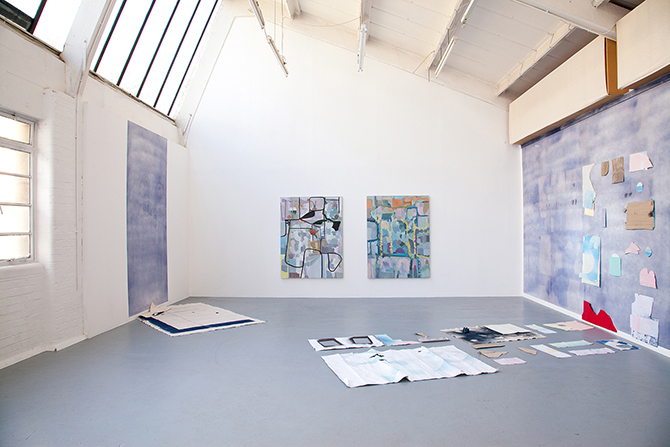
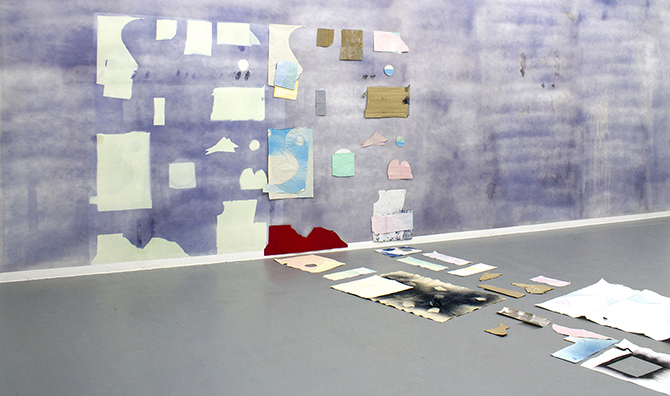
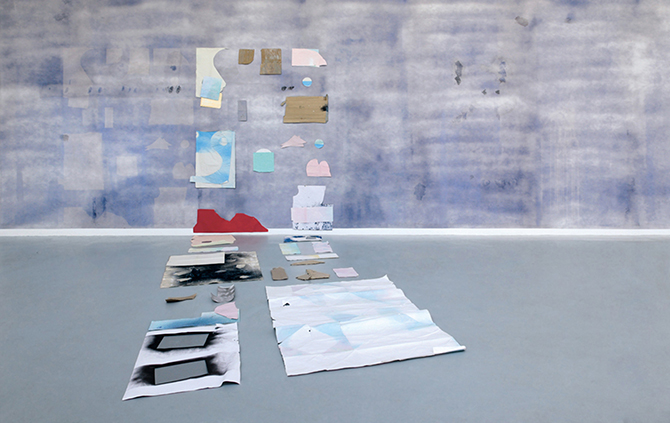

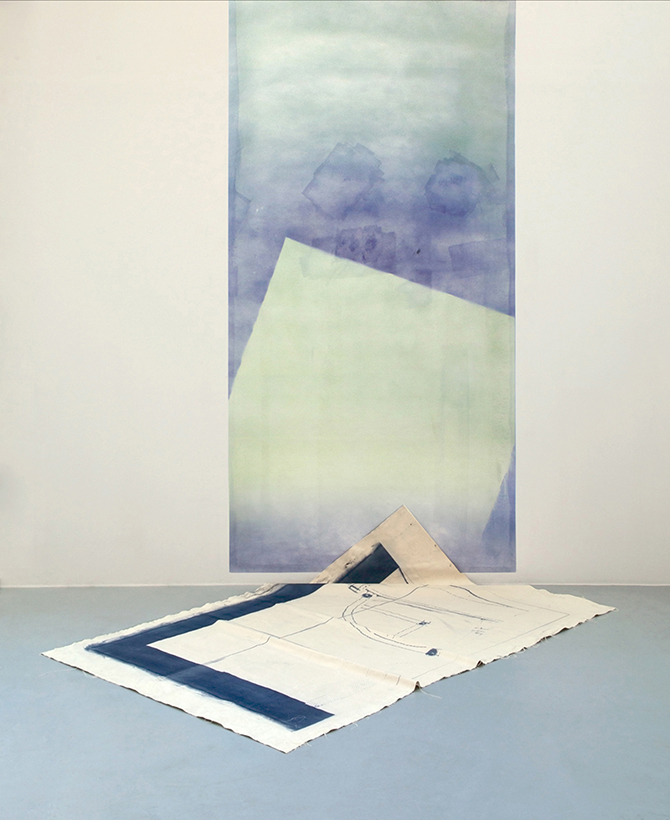
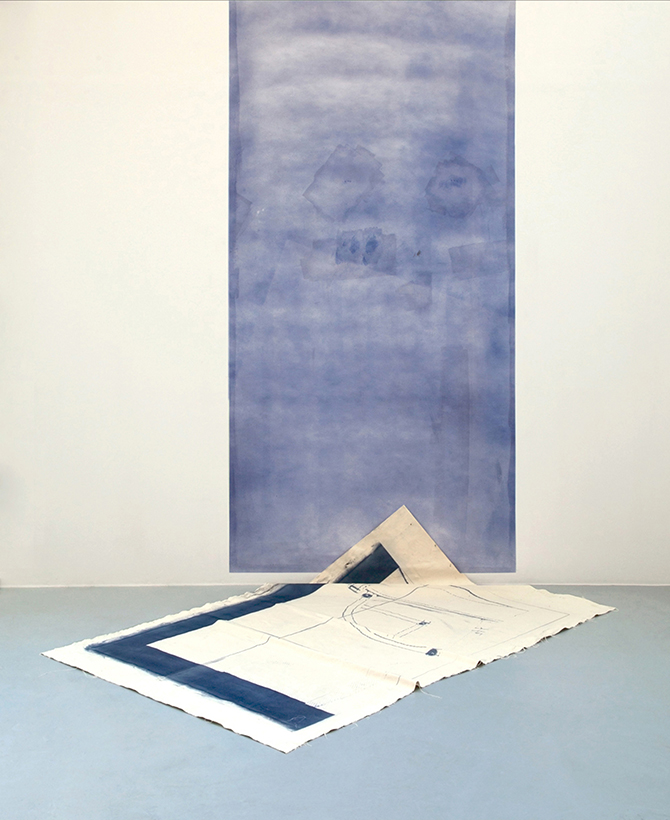

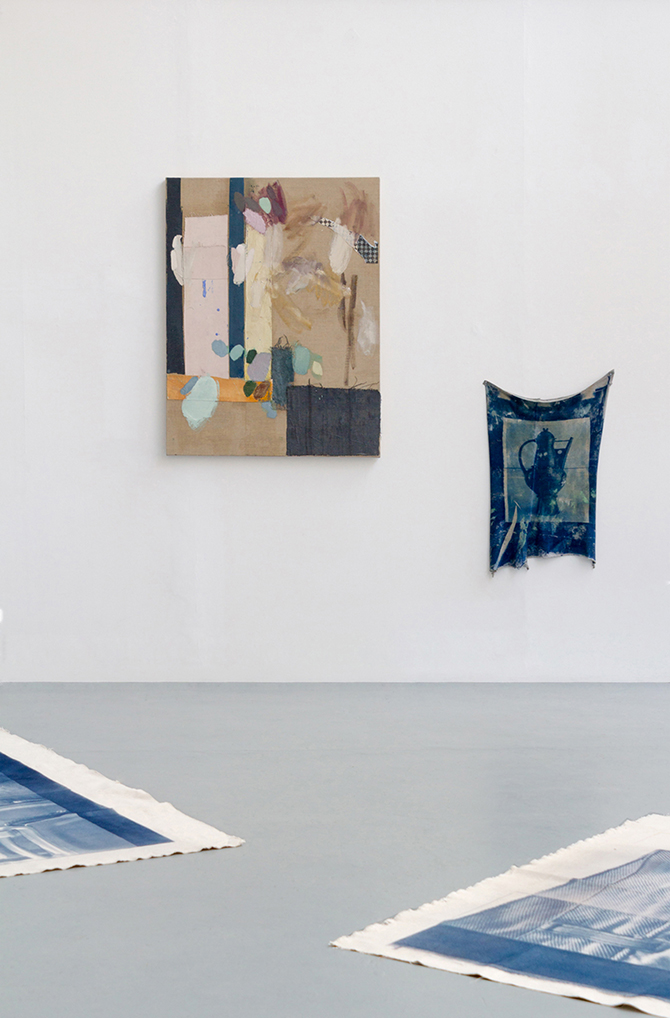
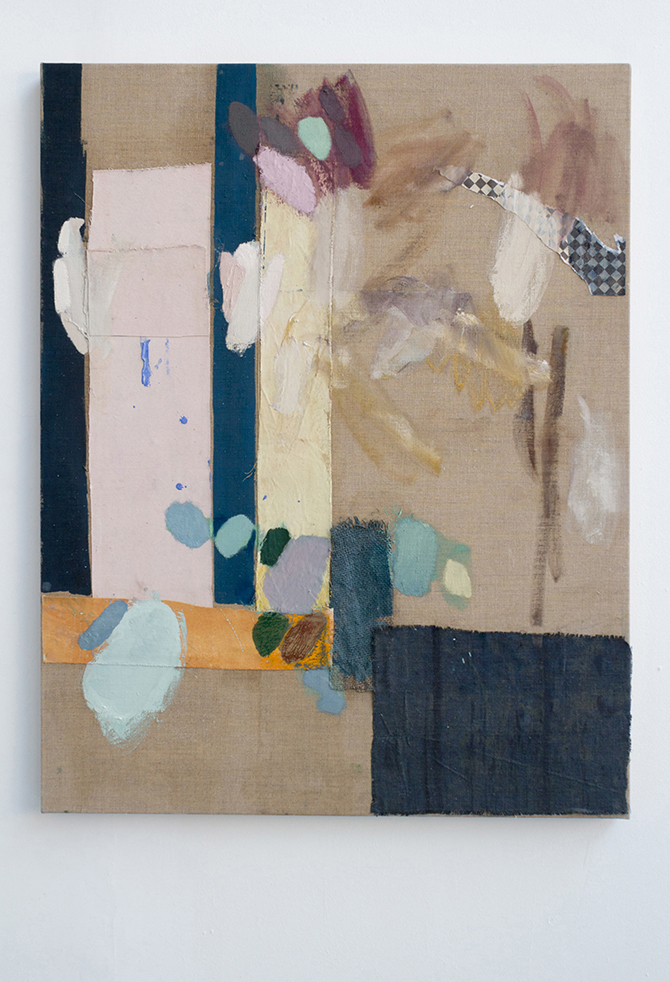





As You Walked in the Room: Jonathan Murphy
2015Chandelier is pleased to present a solo exhibition of new work by British artist Jonathan Murphy.
The artist has worked with the mediums of painting, photography and installation to produce wall and floor-based objects that present a series of exterior views – often distorted and abstracted – that engage the pictorial idea of window space. With particular emphasis on the role of mise-en-scène in the production of narrative, the work makes a number of allusions to the setting of a scene, or location, from interior space.
In 1826 Nicéphore Niépce produced the oldest surviving photograph of a view from a building in Le Gras, Burgundy, France, using a camera obscura. The archetypal artist’s view from a window thus made the movement from painting to enter the genre of photography – its gesture towards eventual reproducibility perhaps claiming it from the singular space of painting forever. The original image, barely visible on its pewter plate, ostensibly reveals an abstraction: the vague composition of horizontal and vertical window crossbars, neither inside nor outside, foregrounding a number of fuzzy planes that appear as buildings.
In 1914, in Southern France, Henri Matisse painted La Porte-fenêtre à Collioure, an almost completely abstracted view from a window. The picture presents five planes of muted colour, reducing the form of the window into a sombre reduction of green and blue hues. At the image’s centre, a black wash applied late in the production of the painting obscures, but does not render invisible, trees and ironwork railings outside. Matisse intended to use black here not as a colour of darkness, but of extreme, blinding light. The artist approaches the subject of a window on its own pictorial terms, literally washing over representation and favouring, instead, a form of partial abstraction. Somewhere between these two variants – describing content, form and materiality – remains a space for narrative.
A fictive room is located at the centre of the exhibition, providing a location from which various narrative motifs can play out within Murphy’s work. A selection of paintings adopt and adapt the motif of the window as a narrative vehicle to incite the viewer to consider not only their physical placement in relation to the other elements within the exhibition, but also the thematic reverberations of the work throughout this indeterminate space.
A wall-based work, rendered with cyanotype chemicals, dominates the space. Covering two sections of gallery wall, the "live" cyanotype will fade throughout the duration of the exhibition.
A floor-based assemblage of scraps of jettisoned materials from the artist’s studio creeps a path across the floor and partially up a wall. These pieces of paper are materially individual, gathered to form a new sculptural work that spills out of its bounds into the exhibition space as a series of narrative markers alluding to the space between inside and out.
The exhibition ultimately focuses on the picturing of “a view”, using depth, proximity, scale and aspect ratio, both in terms of the composition of works, but also the constructing of narratives open to various interpretations. The intuitive practice of matching forms and colours to one another differs greatly between the two spaces of photography and painting, which can be considered psychological in their particularities, as much as material and technological. It might be said that in the former one starts with the entire world and pictures a selection of it, and in the latter blankness pervades through which a world must be entirely constructed.
In this sense Murphy is investigating both the psychological status of one process over another, but also the way that attempts to carry narrative through multiple, incommensurable spaces ultimately recline into abstraction: a particular technology falls apart, or a compositional trope takes precedence and therefore a hold on the practice of making something.
An essay by Daniel C. Blight accompanies the artist's work.
About the artist
Jonathan Murphy's (b.1980) practice assumes the vernacular language of traditional painting, sculpture and photographic techniques to generate a mise-en-scène type space where imagery is made and tested. His work engages with several notions of place, memory and spectatorship. The wall-based photographic prints he is currently making set in motion an evolving narrative space; the concerns of which, among other things, are the changing register of sculptural perception. The artist is editor of the online fanzine Nada/Da. He studied painting at The Slade School of Fine Art between 2000–2004 and lives and works in London.